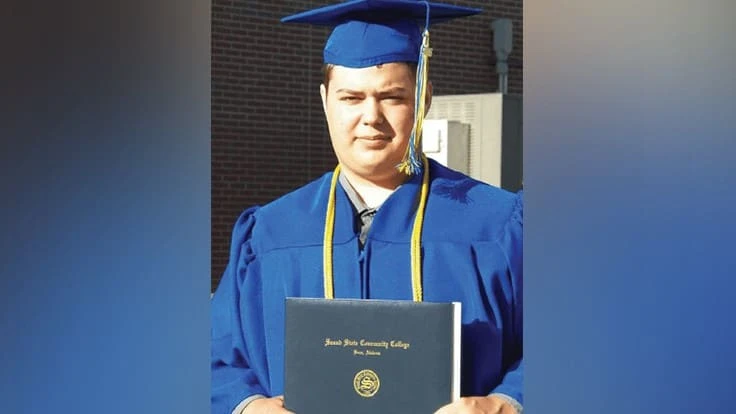

As a current horticulture student at Snead State Community College in Alabama, Cory Johnson says he wants to one day earn a PhD in horticulture with an emphasis on plant genetics. He’s grown to love creating his own breeds of daylilies and estimates he’s grown roughly 2,000 plants in his academic career already.
Someday, he’ll grow more than just daylilies — Johnson is simply learning the ropes of plant genetics one step at a time.
“I want to be like, ‘Hey, I created that plant that’s in your yard over there,’” he says. Johnson graduated with an art studio degree from Snead State already, but he returned after realizing the options that come with a horticulture degree. Now a sophomore who plans on transferring to Auburn University or Alabama A&M University, he’s found plenty of success in his new field of study.
He won the college’s President’s Award last year for having the highest GPA among all students in the now-sophomore class. Johnson also just became president of the North Alabama Daylily Society club, a role he earned after two years of setting up plant tours and arranging meetings as the vice president. What’s more, he continues to work in the campus greenhouse, which just opened this fall as a brand new facility.
The President’s Award meant a tremendous amount to Johnson, who felt validated for deciding to spend more of his time in school than most of his peers.
“It made me feel good that I was able to earn that,” Johnson says. “It made up for all the time I used to study instead of doing other things.”
Johnson says he’s done some residential landscaping in the past as a means of just making some extra cash, but now he’s interested in collaborating with landscape designers in the future. He believes certain plants can make a design stand out, and his past as an art major could benefit this partnership looking ahead.
“That’s the creative side. This is where the art degree helps,” Johnson says. “With your breeding, you can be selective too, and work towards certain heights or certain colors and fit them within a landscape.”
Johnson jokes that his role isn’t all that different from a bee, and he’s not technically wrong: He puts pollen on a pistil much like the natural pollinators. However, he’s also learning more about how to create specific plants behind four years’ worth of reading books on plant genetics.
It’s something that always interested him, but like many others, he simply didn’t know what opportunities existed in the field. He encourages students to ask questions in their classes to get the full understanding of what they can do with their horticulture degrees.
“People don’t really know what it is or what you can do with it, but you can do all kinds of different things,” Johnson says. “It depends on which field you want to do. You could do landscape design, genetic or whatever. [Most] don’t really know what the degrees are for.”

Explore the March 2020 Issue
Check out more from this issue and find your next story to read.
Latest from Greenhouse Management
- Anthura acquires Bromelia assets from Corn. Bak in Netherlands
- Top 10 stories for National Poinsettia Day
- Langendoen Mechanical hosts open house to showcase new greenhouse build
- Conor Foy joins EHR's national sales team
- Pantone announces its 2026 Color of the Year
- Syngenta granted federal registration for Trefinti nematicide/fungicide in ornamental market
- A legacy of influence
- HILA 2025 video highlights: John Gaydos of Proven Winners





